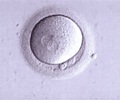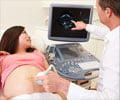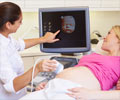A Cornell graduate student has developed a groundbreaking therapeutic ultrasound device, which can fit in the palm of a hand, is battery-powered and packs enough punch to stabilize a gunshot wound or deliver drugs to brain cancer patients.
George K. Lewis, a third-year Ph.D. student in biomedical engineering and a National Science Foundation fellow has created a prototype of the device, which is wired to a ceramic probe, called a transducer, and creates sound waves so strong they instantly cause water to bubble, spray and turn into steam.Lewis while working in his Olin Hall lab creates ultrasound devices that are smaller, more powerful and many times less expensive than today's models.
While the devices currently available in the market can weigh 30 pounds and cost 20,000 dollars, Lewis' device is pocket-sized and built with just 100 dollars.
He envisions a world where therapeutic ultrasound machines are found in every hospital and medical research lab.
"New research and applications are going to spin out, now that these systems will be so cheap, affordable and portable in nature," said Lewis.
Generally, ultrasound is used as a nondestructive imaging technique in medical settings. Sound waves, inaudible to humans, can generate images through soft tissue, allowing, for instance, a pregnant woman to view images of her baby.
Advertisement
His devices can also relieve arthritis pressure and even help treat brain cancer by pushing drugs quickly through the brain following surgery. Ultrasound waves created by one of Lewis' devices leave the transducer, submerged under water, causing the water to bubble, spray and turn into steam.
Advertisement
Lewis miniaturized the ultrasound device by increasing its efficiency. Traditional devices apply 500-volt signals across a transducer to convert the voltage to sound waves, but in the process, about half the energy is lost. But Lewis has devised a way to transfer 95 percent of the source energy to the transducer.
His new devices are currently being tested in a clinical setting at Weill Cornell Medical College where one of the devices is being used in experiments that aim to minimize injury that occurs when tissues do not receive adequate blood flow.
Tests are being performed in animals to determine whether low doses of the chemical hydrogen sulfide, known to be toxic at high doses, might be able to minimize such injury by slowing cellular metabolism.
Doctors are hopeful that the ultrasound from Lewis' portable device will enable hydrogen sulfide to be targeted to specific parts of the body, allowing doctors to use less of it, and cutting down on toxicity risks.
The development of one of Lewis' portable devices is detailed in a recent issue of the journal Review of Scientific Instruments.
Source-ANI
SRM















